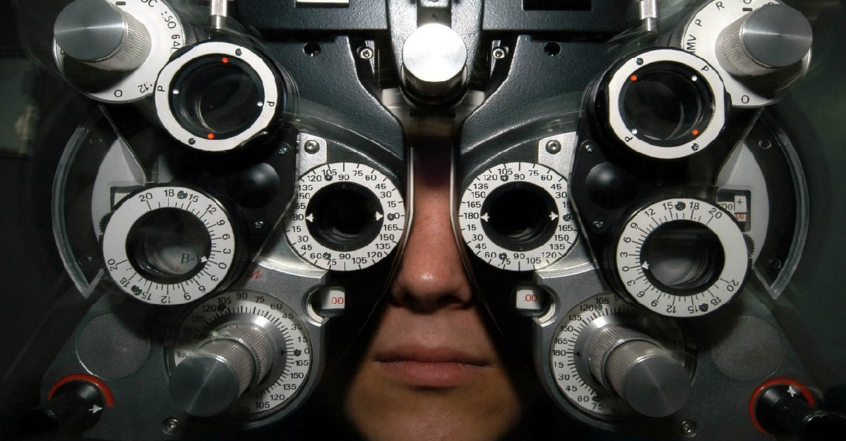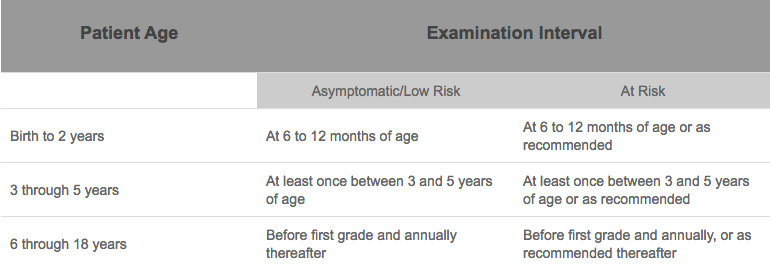The eye is the only part of the human body in which blood vessels and nerve tissue can be examined directly in their natural state, according to the American Optometric Association (AOA). A regular eye exam is an important part of preventive health care. It allows professionals to detect eye issues at early stages and can also confirm good health or warn of impending health issues.
What does an eye exam consist of?
Each patient’s symptoms and history will determine what tests will be conducted. An eye and vision exam may include, but is not limited to:
- Visual Acuity Test- This test values clarity of each eye’s vision. You’ll read letters on charts at a various distances, near and far.
- Preliminary Evaluations – These include assessments involving depth perception, color vision, eye muscle movements, peripheral vision, and the way pupils reactivity to light.
- Keratometry Reading – This measures the curvature of the cornea, which is especially important to calculate the right fit for contacts.
- Refraction Measurement – This tells the doctor what lens power may be needed to compensate for any refractive error, including nearsightedness, farsightedness, or astigmatism.
- Eye Focusing, Eye, and Eye Movement Testing – This test will evaluate any issues that keep your eyes from focusing effectively or make using both eyes simultaneously difficult.
- Supplemental Assessments – Based on the finding from the above tests, additional investigation may be needed to confirm or rule out possible eye issues, to clarify uncertainty, or to provide a more in-depth assessment.
What is the doctor checking for?
Your eye doctor will not only evaluate you for nearsightedness, farsightedness or astigmatism but will also check for eye disease and other eye issues that could lead to vision loss. Doctors will scan for glaucoma, age-related macular degeneration, and diabetic eye disease. Your eye doctor may also be able to detect systemic conditions, such as high cholesterol and diabetes. For example, small blood vessel leaks or bleeding in the eye can be caused by diabetes. Catching any of these conditions in the early stages can help reduce the risk of permanent vision loss.
Recommended Eye Examination Frequency for Pediatric and Adult Patients
Early diagnoses and treatment of eye and vision issues can aid in averting vision loss. The AOA guidelines for the regularity of eye exams are as follow for children and adults:
Infant, Toddler, or Child Frequency
- At-Risk Factors
- Prematurity, low birth weight, prolonged supplemental oxygen at birth
- Family history of myopia, amblyopia, strabismus, retinoblastoma, congenital cataracts, metabolic or genetic disease
- Infection of the mother during pregnancy (e.g., rubella, toxoplasmosis, venereal disease, herpes, cytomegalovirus or human immunodeficiency virus)
- Maternal smoking, use of alcohol or illicit drug use during pregnancy
- Cortical visual impairment
- Difficult or assisted labor, which may be associated with fetal distress
- High or progressive refractive error
- Strabismus
- Anisometropia
- Academic performance problems
- Known or suspected neurodevelopmental disorders
- Systemic health conditions with potential ocular manifestations
- Wearing contact lenses
- Having functional vision in only one eye
- Eye surgery or previous eye injury
- Taking prescription or nonprescription drugs (e.g., over the counter medications, supplements, herbal remedies) with potential ocular side effects
Adult Frequency
- At-Risk Factors
- A personal or family history of ocular disease
- Belonging to certain racial and ethnic groups
- Systemic health conditions with potential ocular manifestations
- Occupations that are highly demanding visually or have a high potential of being hazardous to
the eyes - Taking prescription or nonprescription drugs with ocular side effects
- Having functional vision in only one eye
- Wearing contact lenses
- Eye surgery or previous eye injury
- High or progressive refractive error
- Other eye-related health concerns or conditions
It’s critical to notice any changes in your eye health and vision. Be sure to know your risk factors and to schedule an eye exam at the frequency recommended by the AOA. Viteyes offers many eye supplements with AREDS 2 Based Formulas for AMD, Multivitamins, Tear Support, Optic Nerve Support, etc.


